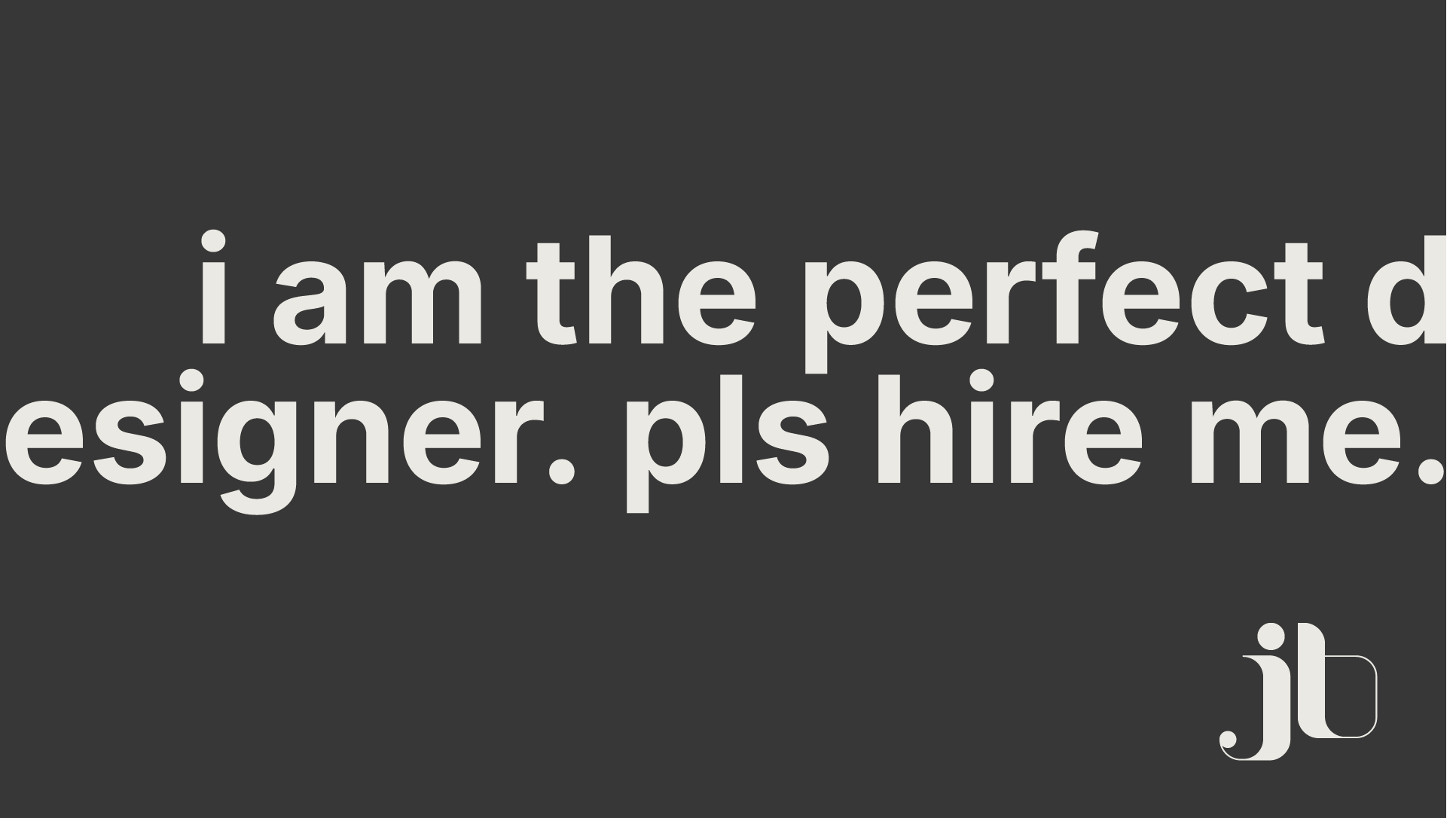Will I ever be good enough at design to get a job? do you need to be a design virtuoso, crafting pixel-perfect masterpieces, to land a role in the creative industry? Many graphic designers can experience a sense of insecurity (in a very literal sense, stemming from an actual lack of job security). It's an all too familiar paradox: You, the passionate graphic designer and artist, strive to pursue and get better at this passion of yours, so you look for inspiration online only to find yourself with the case of Impostor Syndrome or self-doubt. Is there room for me in this crowded marketplace in a world where many believe anyone can be a designer thanks of pre-made Canva templates and A.I. art generators? I want to unpack this with a meaningful open discussion on what actually matters when carving out a space for yourself in the world of design..
Good Design is Good Business
Let’s begin with a fundamental truth: good design is essential. It’s the difference between a brand being taken seriously or overlooked entirely. Ever seen a company logo that looks like it was made in Microsoft Paint circa 1998? Not exactly confidence-inspiring, right?
Good design builds trust, tells a story, and fosters emotional connections. It’s what makes people say, “Oh, I understand this brand’s essence.” But does this mean you need to produce the next Mona Lisa to be credible? Not at all. Good brand design is about solving problems, not just making things pretty. For instance, in my current role managing brand identity for a home and commercial services company, the focus has been on creating consistency and recognition—not necessarily producing career-defining art. The key is to meet objectives and build trust, both of which are hallmarks of successful design.
The Perils of Perfectionism
“I’m not applying for that design role yet… my portfolio isn’t perfect.”
Sound familiar? Perfectionism has a cunning way of convincing us that “good” isn’t good enough. But here’s the reality: the creative industry thrives on iteration and growth. No one—not even the legends—started their career with a portfolio full of masterpieces. Everyone begins somewhere.
Employers and clients don’t expect perfection. They’re looking for potential. Do your designs address problems? Do they demonstrate thoughtfulness and a unique perspective? If so, you’re already ahead. So, let go of the inner critic demanding perfection and just start. The industry doesn’t need flawless designers; it needs adaptable, curious problem-solvers.
Being Smart and Strategic
In the realm of design, strategic thinking trumps aesthetics every time. Sure, it’s great if your work could hang in a gallery, but does it achieve the client’s objectives? Does it resonate with the intended audience? A gorgeously designed ad campaign that doesn’t convert is just expensive art.
Strategic design involves understanding the “why” behind the “what.” It’s not just about arranging elements pleasingly—it’s about crafting solutions that align with goals. This requires empathy for the audience, clarity about client objectives, and the critical thinking to bridge the two. If you can do this, you’re positioning yourself as an invaluable asset.
Being a Good Communicator and Collaborator
Let’s face it: even the most stunning visual design can fall flat if you can’t effectively communicate your ideas. Articulating your design decisions is just as critical as the designs themselves. Why did you select that color palette? What’s the rationale behind your layout? Clients and colleagues need to understand your thought process to trust your work.
Collaboration is equally vital. Unless you’re a one-person design army (which, let’s be honest, can be exhausting), you’ll be working with others. Designers who can listen, give and receive constructive feedback, and thrive in a team environment are indispensable. Collaboration is the secret ingredient that transforms good ideas into exceptional outcomes. You don’t have to be a solitary genius; being a team player with a vision is far more impactful.
So… Do You Have to Be Great at Design?
Not necessarily. You need to be competent enough to demonstrate an understanding of principles, purpose, and process. But being “great” at design isn’t the only path to success. What will truly distinguish you is your ability to:
- Solve problems effectively.
- Approach projects with strategic intent.
- Communicate and collaborate with professionalism.
- Deliver designs that achieve objectives—even if they’re not flawless.
If you’ve been holding back because you’re not the Michelangelo of modern design, stop. Focus on honing your skills, emphasizing your strengths, and showcasing your potential. At the end of the day, employers and clients seek designers who understand the big picture, not just those who can sketch it.
Now go out there and claim your space in the design world. You’ve got this.

